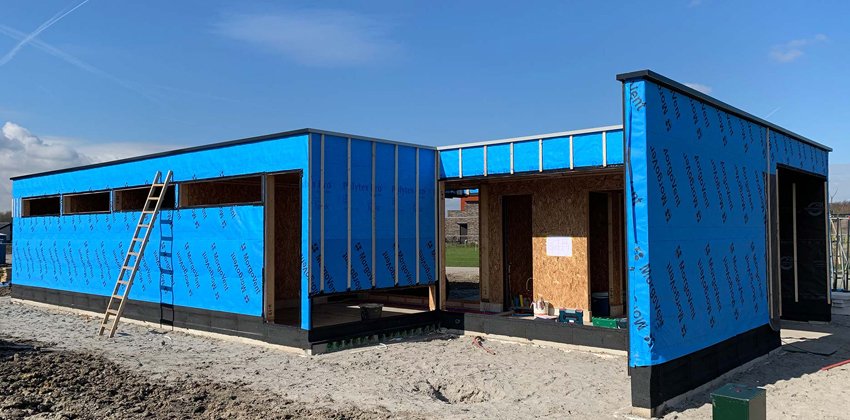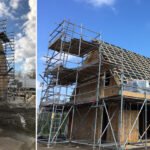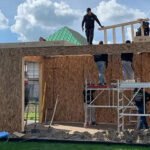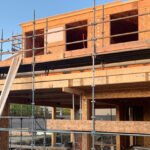
What Every Building Owner Should Know About SIP Maintenance
One of the greatest advantages of building with Structural Insulated Panels (SIPs) is that they are designed to be durable, energy-efficient, and low-maintenance. Unlike traditional buildings that often require frequent repairs to masonry, plaster, or insulation, SIP buildings deliver long-term performance with minimal upkeep.
However, “low maintenance” does not mean “no maintenance.” Like any building system, SIPs benefit from proper care to maximize their lifespan, maintain performance, and protect long-term property value. For building owners, understanding the basics of SIP maintenance is essential. This guide outlines the most important aspects—from routine inspections to long-term strategies—that every SIP building owner should know.
With a commitment to driving technological evolution, our IT solutions and tour design services are the cornerstone of your digital progression. We transcend boundaries enabling businesses to not
Why SIPs Require Less Maintenance
SIPs differ from traditional construction in key ways:
- Integrated Design: Structure and insulation are combined in one panel, meaning fewer weak points where moisture or pests can enter.
- Factory Quality: Prefabricated in controlled environments, SIPs avoid many of the inconsistencies of on-site construction.
- Durable Materials: OSB4 and Neopor® insulation cores are resistant to mold, pests, and structural degradation.
As a result, SIP buildings require far less intervention over time. Yet, preventive care ensures they continue to perform at their best.
Routine Inspections
Even the most durable buildings benefit from regular check-ups. Owners should schedule inspections at least once a year, focusing on:
- Exterior Cladding – Check for cracks, gaps, or damage in siding, brick, or render that could allow moisture to penetrate.
- Roof Coverings – Inspect for missing shingles, loose membranes, or other vulnerabilities that may lead to water ingress.
- Sealants and Flashing – Review window and door joints, expansion joints, and roof connections to ensure airtightness and waterproofing remain intact.
- Ventilation Systems – Ensure mechanical ventilation (such as MVHR systems) is working properly to maintain indoor air quality and prevent condensation.
These checks are simple, cost-effective, and prevent small issues from becoming major repairs.
Moisture Management
Moisture is the primary risk factor for any building, and SIPs are no exception. Fortunately, proper detailing and maintenance greatly reduce the risk:
- Exterior Cladding Maintenance: Always ensure exterior finishes are intact and properly sealed. SIPs should never be left exposed to weather.
- Gutter and Drainage Systems: Keep gutters, downspouts, and site drainage clear to prevent water from pooling near foundations.
- Roof Integrity: Roof leaks are among the most common causes of damage in any building. Regular roof inspections are essential.
By keeping water out and ensuring ventilation, SIP buildings maintain their high performance for decades.
Mechanical and Electrical Systems
Because SIP homes are airtight and energy-efficient, building services play a crucial role in maintaining comfort and performance.
- Ventilation: In airtight buildings, mechanical ventilation with heat recovery (MVHR) is essential. Filters should be replaced regularly to maintain airflow and efficiency.
- Heating and Cooling: SIPs reduce HVAC loads, but systems must still be serviced annually to ensure efficiency.
- Electrical: SIP panels come with pre-cut service chases. Electrical systems should be checked during routine inspections to ensure no modifications compromise panel integrity.
Long-Term Durability
When properly maintained, SIP buildings can last as long as—or longer than—traditional buildings. Studies and field experience show that SIP structures exceed 60 years of service life with minimal degradation.
Key reasons for this durability include:
- Structural Stability: SIPs resist settlement and warping better than timber-frame or masonry.
- Mold Resistance: The closed-cell insulation core reduces moisture absorption.
Pest Resistance: With fewer cavities and weak points, pests such as termites or rodents are less likely to cause damage.
Energy Performance Over Time
Another critical aspect of SIP maintenance is ensuring that the building envelope continues to perform as designed. Over time, even small leaks or gaps can reduce efficiency.
- Blower Door Testing: Every 5–10 years, building owners should consider an airtightness test to confirm performance.
- Thermal Imaging: Infrared scans can identify cold spots or leaks, allowing proactive repairs.
- Insulation Integrity: SIPs maintain their R-values better than many traditional insulation methods, but checking cladding and joints ensures consistent performance.
Protecting Property Value
For building owners, maintenance is not just about performance—it is about preserving and enhancing property value. Energy-efficient, well-maintained SIP homes command higher resale prices and are increasingly attractive to buyers looking for sustainable living.
Documenting maintenance activities, such as inspections and repairs, provides additional confidence to future buyers or tenants.
Common Misconceptions About SIP Maintenance
- “SIPs Don’t Need Any Maintenance”: While SIPs are low-maintenance, ignoring inspections can allow small problems to grow.
- “Moisture Will Always Be a Problem”: With proper detailing, cladding, and ventilation, SIPs perform exceptionally well in both wet and dry climates.
- “Repairs Are Complicated”: Most SIP maintenance is straightforward and involves standard building practices.
Practical Maintenance Checklist for Owners
Annual Tasks:
- Inspect exterior cladding, sealants, and roof coverings.
- Check gutters and site drainage.
- Service ventilation and HVAC systems.
Every 5–10 Years:
- Conduct blower door and/or thermal imaging tests.
- Re-seal joints and flashing where necessary.
As Needed:
- Repaint or refinish exterior cladding.
- Replace ventilation filters.
- Repair any accidental damage promptly.
Conclusion
Owning a SIP building means enjoying lower maintenance, higher efficiency, and greater comfort compared to traditional construction. However, proactive care ensures that these advantages are preserved for decades.
With simple inspections, proper moisture management, and attention to building services, SIP homes can remain high-performing, sustainable, and valuable for generations.
For building owners, the message is clear: SIPs are not only easy to maintain—they are one of the most reliable, future-ready building systems available in Europe today.





Add a comment